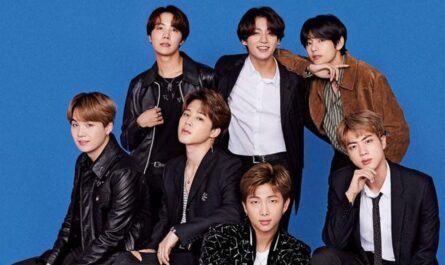It is said that Korea is a developed country, but the presence of Korean art in world art is still weak. Nam June Paik, an artist recognized by the world, was a multinational who went through Korea, Japan, Germany, and the United States. Ufan Lee was also a global citizen who busily travelled between Korea, Japan, and Paris. If they had lived and worked in Korea, the current global status would not have been possible. Recently, Yang Hye-guy has been actively working worldwide, but he has also been a citizen of Berlin, Germany, for ten years. There is still a threshold for living in Korea and growing as a world-class artist. Let’s find out the entry for Korean art that cannot develop world-class artists in Korea compared to K-pop.
K-pop opening in back alleys in South America
For several years ago, it has been common to see young people dancing to the songs of Korean idol groups in back alleys in Europe or South America on YouTube or TV. Its unfamiliar appearance shows how K-pop has contributed to popular music. K-pop cannot be defined or classified as a specific genre in that it sings existing genres such as dance, hip-hop, and ballad. However, unlike existing popular music, several members sing a song and dance to the song like a sword. In this way, as song and dance have equal weight, their music attempts to change from auditory to visual.
Today’s popular music is consumed ‘audio-visually’ as it becomes music that can be watched together on YouTube rather than just listened to through audio. K-pop has led audiovisual pieces in line with the changing platforms of music consumption. Therefore, it is difficult for middle-aged people to understand the popularity of contemporary K-pop, who only think of listening to music.
Just as important as the song is the spectacle of the group dance that the members create together, and the members’ appearance, clothes, manners, and thoughts and actions are also objects of consumption. The generation that consumes YouTube and communicates with social networking services (SNS) consumes music and lyrics and every move of the members. Korean idol groups, including BTS, are made up of members optimized for such consumption needs. The change of the times has changed the definition of music that consumers want. The secret to K-Pop standing on the world stage is to accurately and quickly capture the change without being bound by stereotypes and responding actively. As Korea is a leader in the spread of the Internet and digitalization, changes in the way people consume music quickly appeared due to technological change. Naturally, sizeable Korean entertainment companies had to respond early to changes in consumer demand.
However, contemporary art is different from popular music. Unless you are interested in art and visit the exhibition hall, you do not have the opportunity to meet with artists other than the artists of the past you learned from textbooks or famous artists who frequently appear in the media. Popular music, popular culture, does not require much separate learning and effort for appreciation, but art, that is, art, requires extra effort and learning except for a few who are usually interested.
In the history of Korean art, in the 1990s, Korea entered the same consumer society as the West and secured contemporaneity with the West through the liberalization of overseas travel. In the mid-1990s, as per capita income exceeded $10,000, the gap with the United States narrowed to less than three times. However, contemporaneity with the West did not mean mutual exchange on an equal level, but only the simultaneity of introducing Western art in real-time without delay.
With the advent of Seo Taiji and Boys in the early 1990s, K-pop began to take on an independent form of Korean pop. With the addition of Korean management, HOT, formed in 1996, has created an organized fandom in Asia. Korean pop culture ushered in an era of Hallyu, such as producing Ahn Jae-Wook, the original Hallyu star from Greater China, and Bae Yong-Joon, a Japanese Hallyu star called ‘Yon-same in dramas.
K-pop is harmonious with the changing demand of Korean consumers who have become accustomed to the Internet environment before other countries, and the management company’s strategy that reads and actively responds to the changes in demand, each playing the role of cutting-edge consumer demand leading a new era and the latest supply to meet them. Could grow. Although K-pop consumers have read and responded to the music they see and read, the change is that music is what they hear and see. Art is still a visual thing that should be beautiful for the majority of audiences.
In the latest trend in the Western mainstream art world, art is a brilliant work of seeing, hearing, touching, thinking, and performing. However, it is not easy for contemporary artists who follow this in real-time to understand their work and meet their favourite audience. The public consumes famous writers from the past that have already become history. The development of Korean art requires the creation of experimental works that expand the horizon of art. This qualitative mismatch between supply and demand is the current state of Korean art, and the absence of need with a professional understanding is a barrier to Korean art.
The need for a qualitative basis for the demand for art
Modern economics begins with the laws of supply and demand, where supply and demand are treated as purely quantitative. However, the development of companies and industries is not achieved solely by quantitative growth in the market. As Korea ushered in the era of a per capita income of $30,000, the average family had enough economic space to purchase art. Now, the quantitative basis for the demand for art has been prepared, but the qualitative basis for the need to develop Korean art has not been scheduled. For Korean art to follow K-pop to the top of the world, from now on, it should focus on supplementing this qualitative foundation. In this way, the threshold that has driven our writers abroad will disappear, and Korean writers, who have already reached the top of the world, can come to their homeland and work to their heart’s content.











